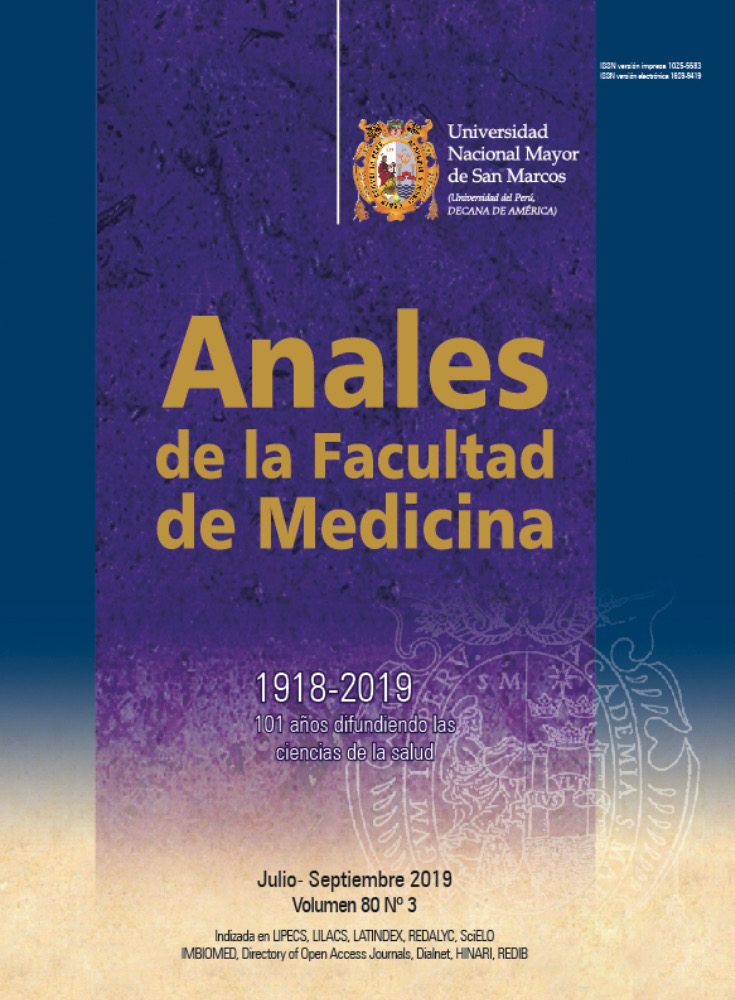Persistence of the reemergence of canine rabies in south Peru
DOI:
https://doi.org/10.15381/anales.803.16866Keywords:
Endemic Diseases; Rabies; PeruAbstract
In the last century, canine rabies was endemic in our country. In the 1990s, Peru implemented the action plan for the elimination of urban rabies on the recommendation of the Pan American Health Organization, achieving successful rabies control. Despite the efforts made, Puno maintained persistent endemic foci, and in 2014, Arequipa reported the first event of reintroduction of urban rabies in Latin America. The outbreak of rabies intensified in recent years in Arequipa, Puno and Cusco, with 19 cases of canine rabies in 2015, to 59 cases in 2016, continuing 2017 with 47 cases, 2018 with 46, and until July 2019, 17 cases Thus, there was reintroduction of canine rabies, establishing a situation of uncontrolled high endemicity. In this report, we address the context and persistence of the re-emergence of canine rabies in south Peru.
Downloads
Published
Issue
Section
License
Copyright (c) 2019 Anales de la Facultad de Medicina

This work is licensed under a Creative Commons Attribution-NonCommercial-ShareAlike 4.0 International License.
Those authors who have publications with this magazine accept the following terms:
- Authors will retain their copyrights and guarantee the journal the right of first publication of their work, which will be simultaneously subject to Creative Commons Attribution License that allows third parties to share the work as long as its author and its first publication this magazine are indicated.
- Authors may adopt other non-exclusive licensing agreements for the distribution of the version of the published work (eg, deposit it in an institutional electronic file or publish it in a monographic volume) provided that the initial publication in this magazine is indicated.
- Authors are allowed and recommended to disseminate their work over the Internet (eg: in institutional telematic archives or on their website) before and during the submission process, which It can produce interesting exchanges and increase quotes from the published work. (See El efecto del acceso abierto ).



